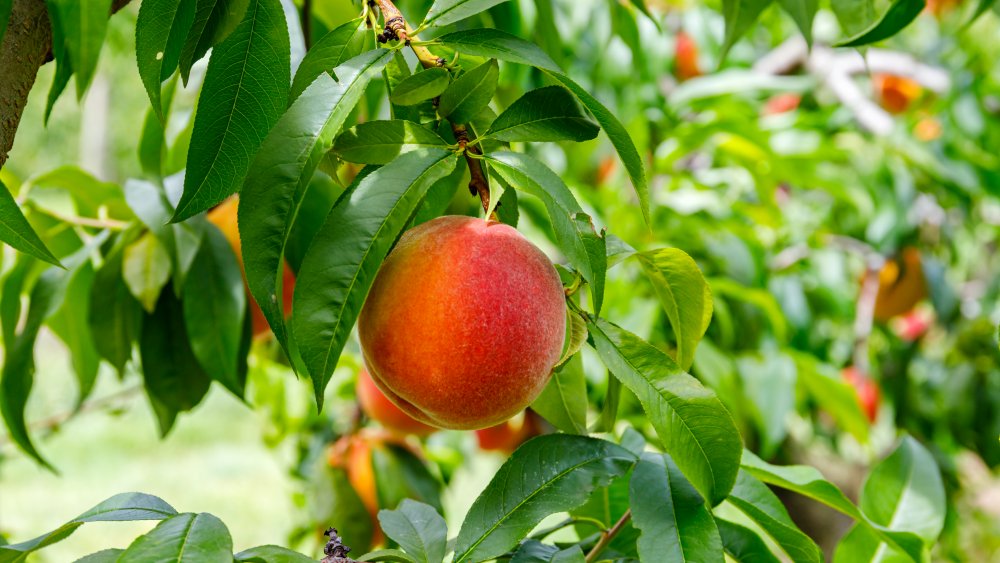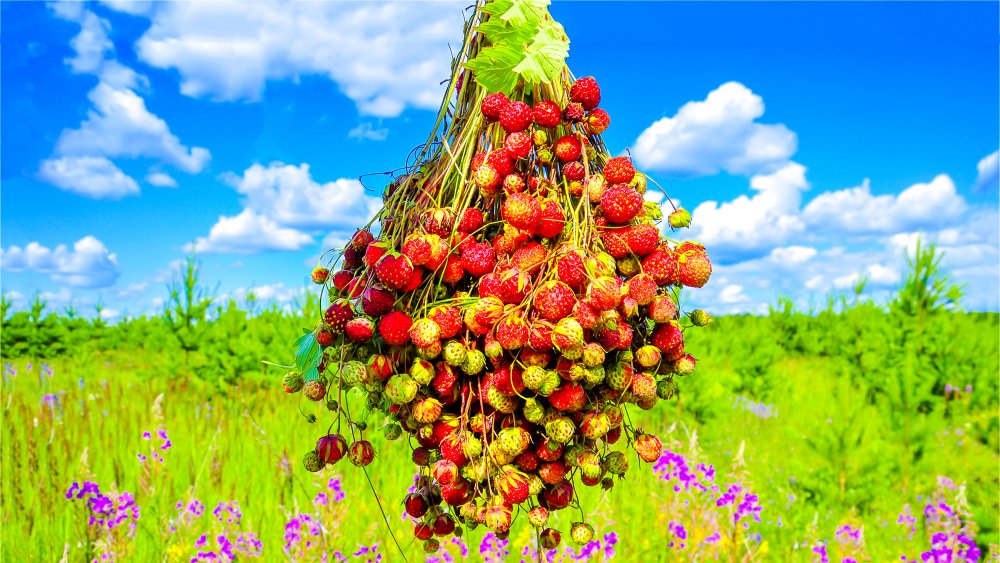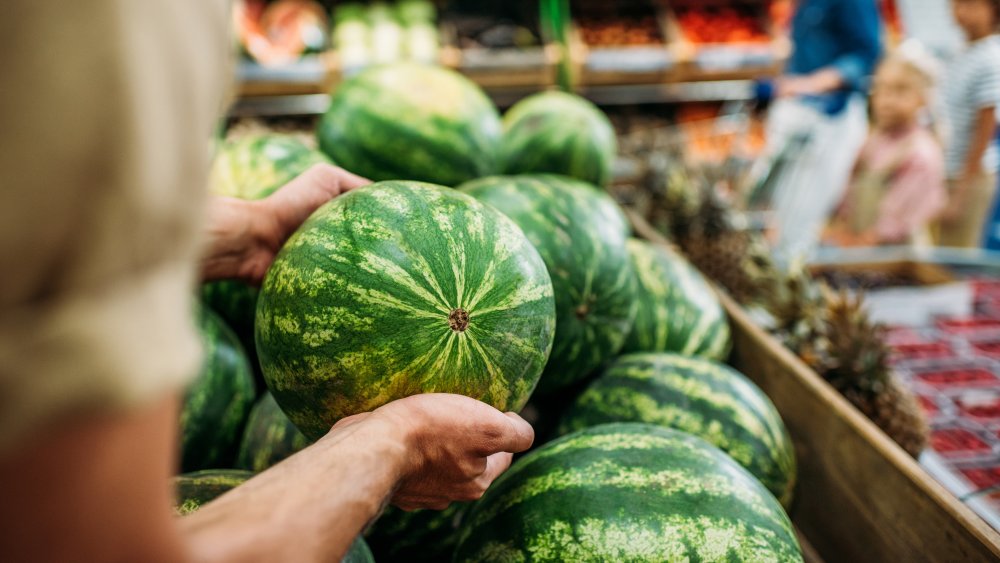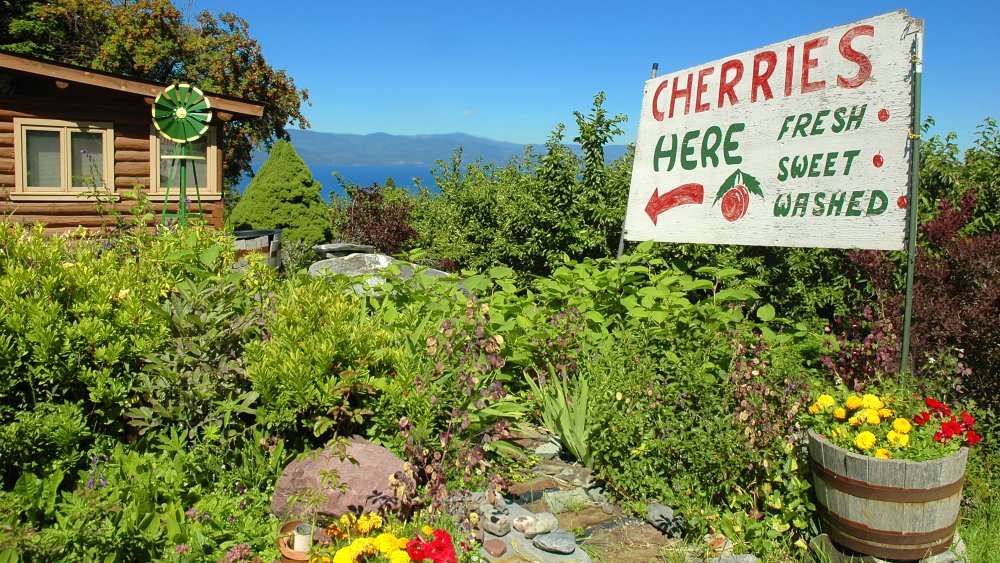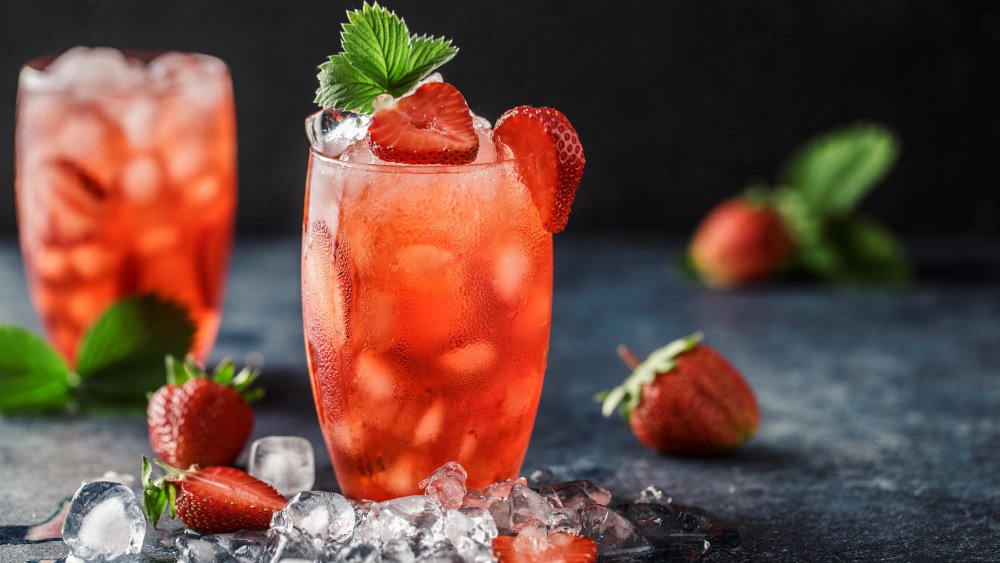These Fruits Are Best In Summer Months
For as long as most of us have been alive, the concept of "seasonal fruits" has been somewhat vague since it seems that even in the dead of winter, supermarkets still carry a wide selection of fruits such as oranges, strawberries, and even pineapples and papayas. What with our ability to transport fresh produce from far-away lands, even residents of the harshest northern climates can enjoy a taste of tropical sunshine in the middle of a January deep freeze.
Even though we don't have to wait for summer's bounty to relieve us from a fruit-free diet, there are still certain fruits that are best enjoyed at the proper time. Culinary expert Heather Ramsdell, Editorial Director of The Spruce Eats, gives the peach as an example. If you eat one out of season, she says it may seem soft on the outside but will actually be "tasteless, cottony and mealy" when you bite into it. She calls peaches "the undead of the fruit world" since they can grow softer without actually being ripe. A peach that has been allowed to reach full ripeness on the tree, however, will taste just as sweet and juicy as a peach is supposed to.
It's not just peaches that are best eaten in their proper season, however. Ramsdell gives us her recommendations on summertime fruits worth waiting for. As she says, "The best parts about ripe summer fruits are their abundance, affordability, and that they give you something to look forward to."
These fruits are ripest in summer
While seasonality depends on location, the types of fruit that are ripest and most abundant towards the end of summer include berries, stone fruits, and melons. Ramsdell says that blackberries, black raspberries, and raspberries are picked right before they're ready to eat and that as they tend to be fragile, they are going to be at their best when there's no necessity for them to "weather a trip of thousands of miles between the vine and your mouth." She also says that apricots, nectarines, and plums, as well as peaches, are noticeably sweeter and juicier in the summer months and that melons will also be juicy and sweet in the summertime, too. Melons out of season, on the other hand, she describes as "meek, pale, bland stand-ins that are probably not worth eating."
How to recognize ripeness
In order to make sure you're purchasing fruit that's at its peak of perfection, you have to learn how to tell ripeness when you see it, which may not be as easy as you'd think given the fact that we're all conditioned to expect the kind of standardized, shipped-for-thousands-of-miles stuff that we find in the grocery produce department year-round. Ramsdell points out, however, that "ripeness is something you can learn to recognize once you have experienced it." She says that ripe fruits have more of an odor (a nice one, since if they're too stinky they're probably overripe – either that or they're durian). They should also feel heavier than unripe fruits. If you bite into a ripe fruit, you'll also notice that it tastes sweeter. There's a reason for this – the longer they are allowed to ripen on the plant, bush, or tree, the more natural sugar they are able to develop.
Where to find seasonal produce
The very best place to find seasonal fruits – should you be so lucky as to have one of these in the vicinity or you've got the leisure time to travel – is a you-pick-it farm. That's because you are 100 percent guaranteed that the fruit went straight from the plant to your mouth (although you really should stop off at the cash register first – no fair eating two quarts of raspberries if you're only paying for a pint). While yes, there's a certain labor cost involved, and you will get your hands dirty, Ramsdell says that "the freshness will be worth the sticky hands!"
If picking your own fruit isn't an option, a roadside stand or a farmers market is also a good bet. With the latter, though, you should make sure that the market is one that does specialize in local produce. (Hint: if you're in New York, those lemons probably weren't locally grown.) You can even find fresh local produce at the supermarket, just look for signage that will helpfully point you towards produce grown nearby.
What to do with your in-season fruit
Now here's a first-world problem: what can you do if, having found your seasonal produce, you go a little crazy and buy more than you can reasonably eat in a few days? You don't have to let it suffer the sad fate of rotting to mush in your fridge's fruit bin when there are so many recipes ready and waiting to help you repurpose your abundant harvest.
Pie is always a classic, as are cobblers – berries and peaches and plums, oh my! You can also use such fruits in compotes, which will allow you, in Ramsdell's words, to "drape fruit all over your pancakes." You can also drink your fruits – most types can work well in smoothies, and just about any fruit can also be blended with some ice and booze to make a daiquiri or margarita or sliced and diced and tossed into wine for sangria. Fruits can also go into salads along with veggies. And of course, if you've bought so much fruit you're really in a jam, you can always use those fruits to make jam. That way you can make that fruit last all winter until it's time to overstock again next summer.
